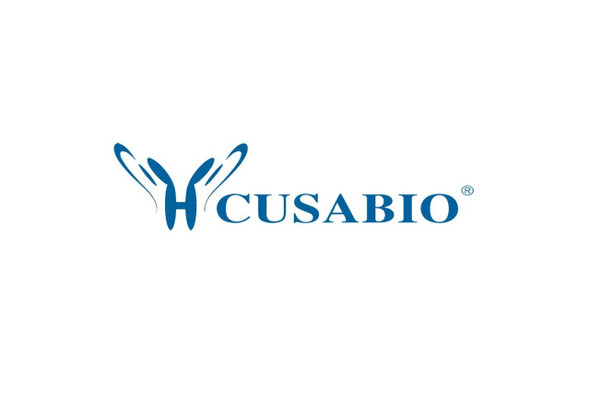Cusabio Mouse Recombinants
Recombinant Mouse Serine/threonine-protein kinase PLK2 (Plk2) | CSB-CF018194MO
- SKU:
- CSB-CF018194MO
- Availability:
- 18 - 23 Working Days
Description
Recombinant Mouse Serine/threonine-protein kinase PLK2 (Plk2) | CSB-CF018194MO | Cusabio
Alternative Name(s): Polo-like kinase 2 Serine/threonine-protein kinase SNK Serum-inducible kinase
Gene Names: Plk2
Research Areas: Signal Transduction
Organism: Mus musculus (Mouse)
AA Sequence: MELLRTITYQPAAGTKMCEQALGKACGGDSKKKRPQQPSEDGQPQAQVTPAAPHHHHHHSHSGPEISRIIVDPTTGKRYCRGKVLGKGGFAKCYEMTDLTNNKVYAAKIIPHSRVAKPHQREKIDKEIELHRLLHHKHVVQFYHYFEDKENIYILLEYCSRRSMAHILKARKVLTEPEVRYYLRQIVSGLKYLHEQEILHRDLKLGNFFINEAMELKVGDFGLAARLEPLEHRRRTICGTPNYLSPEVLNKQGHGCESDIWALGCVMYTMLLGRPPFETTNLKETYRCIREARYTMPSSLLAPAKHLIASMLSKNPEDRPSLDDIIRHDFFLQGFTPDRLSSSCCHTVPDFHLSSPAKNFFKKAAAALFGGKKDKARYNDTHNKVSKEDEDIYKLRHDLKKVSITQQPSKHRADEEPQPPPTTVARSGTSAVENKQQIGDAIRMIVRGTLGSCSSSSECLEDSTMGSVADTVARVLRGCLENMPEADCIPKEQLSTSFQWVTKWVDYSNKYGFGYQLSDHTVGVLFNNGAHMSLLPDKKTVHYYAELGQCSVFPATDAPEQFISQVTVLKYFSHYMEENLMDGGDLPSVTDIRRPRLYLLQWLKSDKALMMLFNDGTFQVNFYHDHTKIIICNQSEEYLLTYINEDRISTTFRLTTLLMSGCSLELKNRMEYALNMLLQRCN
Source: in vitro E.coli expression system
Tag Info: N-terminal 10xHis-tagged and C-terminal Myc-tagged
Expression Region: 1-682aa
Sequence Info: Full Length
MW: 85.3 kDa
Purity: Greater than 85% as determined by SDS-PAGE.
Relevance: Tumor suppressor serine/threonine-protein kinase involved in synaptic plasticity, centriole duplication and G1/S phase transition. Polo-like kinases act by binding and phosphorylating proteins are that already phosphorylated on a specific motif recognized by the POLO box domains. Phosphorylates CENPJ, NPM1, RAPGEF2, RASGRF1, SNCA, SIPA1L1 and SYNGAP1. Plays a key role in synaptic plasticity and memory by regulating the Ras and Rap protein signaling: required for overactivity-dependent spine remodeling by phosphorylating the Ras activator RASGRF1 and the Rap inhibitor SIPA1L1 leading to their degradation by the proteasome. Conversely, phosphorylates the Rap activator RAPGEF2 and the Ras inhibitor SYNGAP1, promoting their activity. Also regulates synaptic plasticity independently of kinase activity, via its interaction with NSF that disrupts the interaction between NSF and the GRIA2 subunit of AMPARs, leading to a rapid rundown of AMPAR-mediated current that occludes long term depression. Required for procentriole formation and centriole duplication by phosphorylating CENPJ and NPM1, respectively. Its induction by p53/TP53 suggests that it may participate in the mitotic checkpoint following stress.
Reference: "The serum-inducible protein kinase Snk is a G1 phase polo-like kinase that is inhibited by the calcium- and integrin-binding protein CIB." Ma S., Liu M.A., Yuan Y.L., Erikson R.L. Mol. Cancer Res. 1:376-384(2003)
Storage: The shelf life is related to many factors, storage state, buffer ingredients, storage temperature and the stability of the protein itself. Generally, the shelf life of liquid form is 6 months at -20?/-80?. The shelf life of lyophilized form is 12 months at -20?/-80?.
Notes: Repeated freezing and thawing is not recommended. Store working aliquots at 4? for up to one week.
Function:
Involvement in disease:
Subcellular Location:
Protein Families:
Tissue Specificity:
Paythway:
Form: Liquid or Lyophilized powder
Buffer: If the delivery form is liquid, the default storage buffer is Tris/PBS-based buffer, 5%-50% glycerol. If the delivery form is lyophilized powder, the buffer before lyophilization is Tris/PBS-based buffer, 6% Trehalose, pH 8.0.
Reconstitution: We recommend that this vial be briefly centrifuged prior to opening to bring the contents to the bottom. Please reconstitute protein in deionized sterile water to a concentration of 0.1-1.0 mg/mL.We recommend to add 5-50% of glycerol (final concentration) and aliquot for long-term storage at -20?/-80?. Our default final concentration of glycerol is 50%. Customers could use it as reference.
Uniprot ID: P53351
HGNC Database Link: N/A
UniGene Database Link: N/A
KEGG Database Link: N/A
STRING Database Link: N/A
OMIM Database Link: N/A









